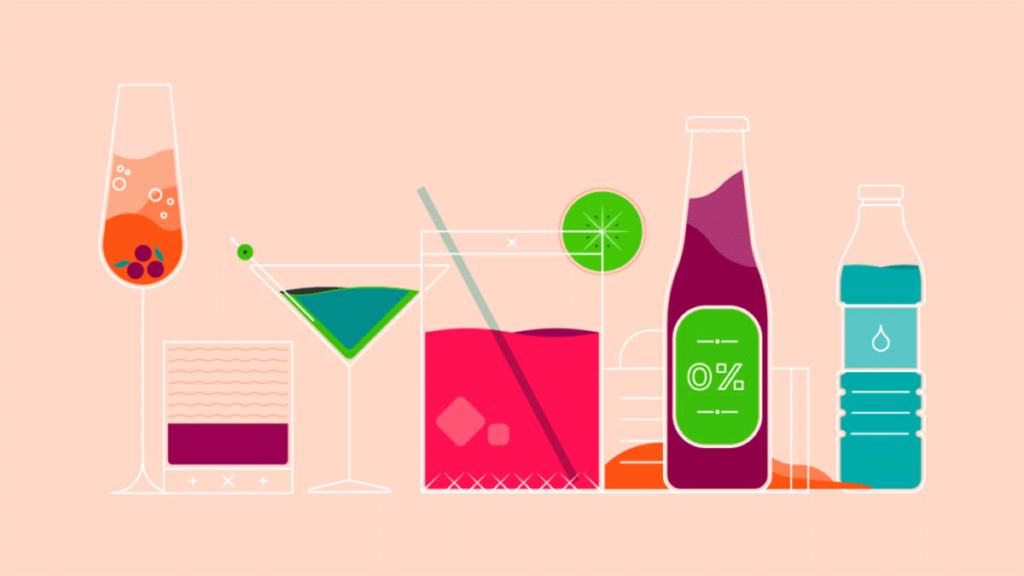The benefits of creating an alcohol aware workplace

Following the release of the latest Totaljobs research, which found that 6 in 10 workers want their employers to offer alcohol-free work socials, bosses should not be surprised that more and more employees now want to work somewhere less focused on boozy work events and more invested in healthy activities. The writing has been on the wall for some time.
Since 2005, the number of young adults choosing not to drink or to drink less alcohol has doubled and the latest survey from Totaljobs has found that 60% of UK workers now want employers to pick booze-free locations for work events and 42% say they’d reject job offers from businesses that appear to be too focused on celebrating with alcohol.
That’s not to say there’s been a total rejection of alcohol – a quarter of UK drinkers still drink above UK guidelines and over a quarter still binge drink (drinking over 8 units for men in one go, and over 6 units for women). However, almost a quarter of workers (23%) now say that they plan to cut back on alcohol, and two-thirds believe it’s now more socially acceptable than it used to be to ‘go sober’ at work events, an indication that there has been a real shift in attitudes to drinking and work.
There are good reasons to ensure your workplace has a more healthy approach to alcohol – that doesn’t mean banning workers from ever drinking alcohol, but it does mean being more aware of the fact that not everyone wants to drink, and that too much alcohol can cause problems for employees and the organisation as a whole.
What can employers do to turn around a boozy culture at work?
The good news is it is more than possible to shift a workplace culture from a largely alcohol-focused one to a more health-conscious workplace – at least to one that promotes health and well-being and encourages alcohol awareness, without having to ban alcohol completely.
A good place to start is to simply consider the degree to which alcohol currently plays a part in corporate life and workplace culture. What are the rules and expectations around consuming alcohol whilst on-duty? Is this accepted or encouraged for client entertainment, business lunches or corporate events? Is alcohol a business expense that is waved through as readily as travel expenses? Are there any rules or expectations around permitted levels of intoxication when returning to work after a business lunch with clients? What does your organisational alcohol and drug policy say about drinking alcohol whilst at work? To turn a boozy workplace culture around requires a change in expectations and assumptions about the role alcohol plays at work.
Of course, any shift in organisational culture needs to happen from the top – so boardroom buy-in is imperative if real change is going to happen. The organisation needs to buy into the notion that too much alcohol is harmful and that to protect all staff, policy and practice may need to change. This would need to be communicated from the outset as a positive approach to improving health and well-being at work.
Creating clear rules about drinking at work
One simple staring point could be to consider whether the organisation is happy to pay for all drinks expenses during business lunches or client entertainment. Putting a limit on what staff can claim sends a strong message that limitless alcohol consumption is not good for health.
At the same time, it’s important to consider what type of drinks are available during corporate events. In short, the greater variety of non-alcoholic drinks available, the greater the message that non-drinkers are welcome and that corporate events are not centred solely around alcohol.
If it is acceptable to drink alcohol while on duty for client entertainment, organisations should also consider passing on some guidelines about moderate alcohol consumption and the expectations around not being intoxicated when returning to work. This not only supports a more responsible workplace culture towards drinking but also sets sensible boundaries for employees’ own health and safety. Of course, that means employers being able to communicate how much is too much and what the recommended unit guidelines are for low-risk drinking.
Supporting non-drinkers to feel welcome and valued
Possibly the most impactful way to shift a culture of heavy drinking within a workforce is simply to raise awareness of alcohol guidelines and tips for drinking safely. This type of social messaging on noticeboards, in canteens or at health fairs, alongside other health messages helps to spark conversations and reinforces the message that the organisation is aware of the risks of excessive drinking and wishes to promote a culture of moderation.
Likewise, choosing to host work events in locations focused on sport or health (ice-skating, bowling, cooking etc.), also reinforces the message that socialising is not all about alcohol, although alcohol could still be available, alongside a wide variety of non-alcoholic choices.
There are good business reasons to support staff who don’t drink and promoting alcohol awareness at work not only creates a positive impression for non-drinkers, but can actually reduce heavy drinking. This message may actually be getting through – with almost two thirds (62%) of senior decision makers now thinking that staff are less interested in alcohol perks than they used to be.
It’s about time senior managers looked seriously at the culture of drinking in their organisation for the sake of all employees – and where there are indications of heavy drinking, they should take the action needed to help make the workplace a safer and more inclusive environment for all.
About Don Shenker
Don Shenker is the Director of Alcohol Health Network. His Twitter handle is @donshenker.
To support employees to check their drinking and learn about alcohol and work, please check out: www.drinkchecker-work.net
About the research
Totaljobs surveyed 2,400 UK workers (including a sample of 1,017 ‘sober curious’ workers) and 250 employers. Both surveys were conducted in September 2019.